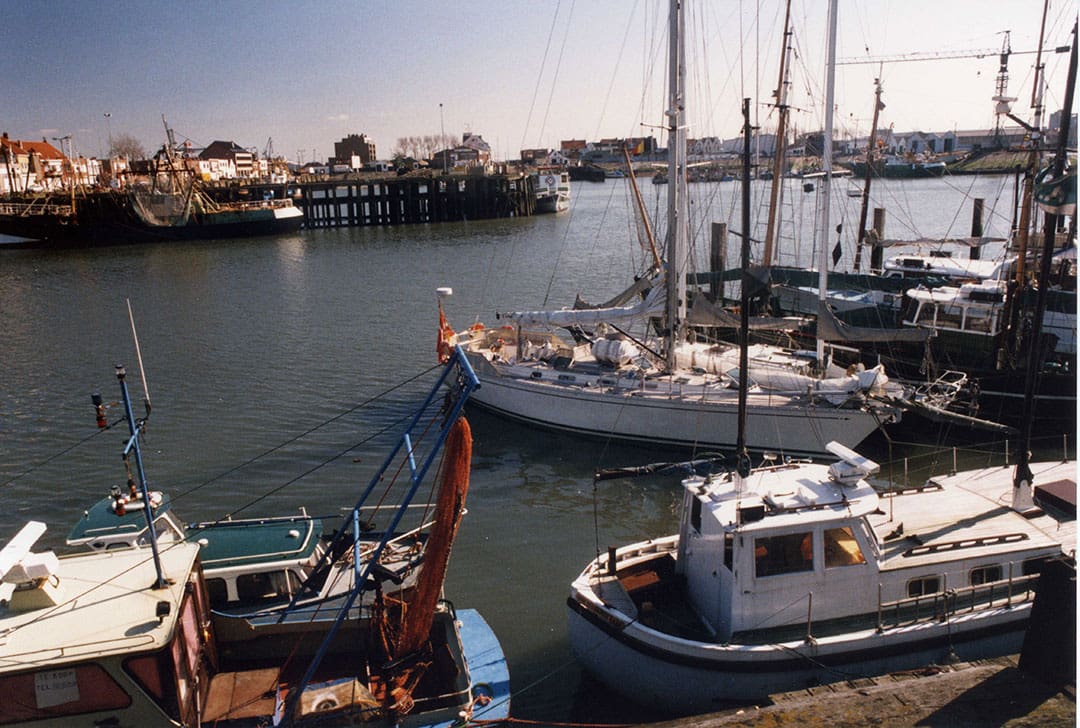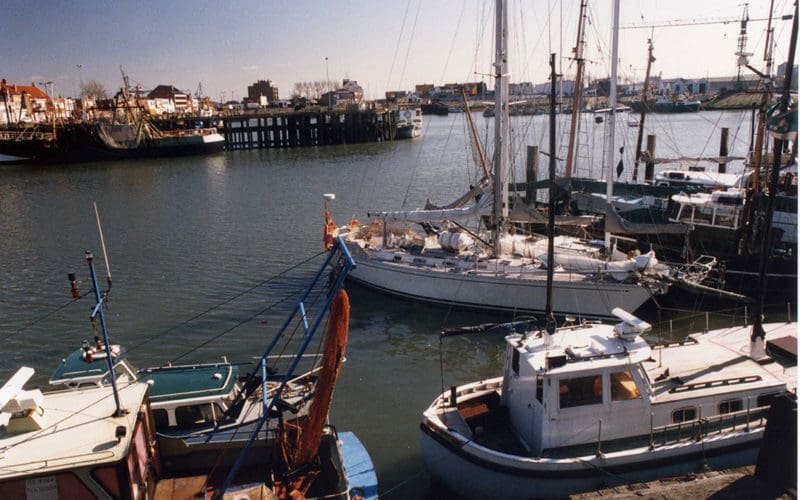
There are many horror stories of yachtsmen running into trouble in the Bay of Biscay. If you want to do a good crossing heading south or are coming north particularly during the latter part of the year, there are some things about the bay you need to know.
There are many fine pilot books available nowadays about these passages south. They don’t much talk about it during the colder months, however. But Ocean Passages for the World, particularly the second blue-paged part written by professional sea captains from the days of sail, still has, in my opinion, some of the best advice about this off season. The notes are quite simple and state: if going south then you must head west until you’ve reached at least 12 to 15 degrees west longitude before heading south. If you look at a chart of the western approaches to the English Channel, it becomes obvious, particularly when you’re sailing a square-rigged ship.
The reasons really are simple; you’ve got plenty of offing and you’ve cleared the 100-fathom bank of the continental shelf. You’ve negated two major factors for any sailing vessel: namely a bad westerly gale that can blow you inshore, and you’re not struggling with shorter waves or any foul tides (wind against sea!) once into ocean depths. You also know that there’s an easterly set to any current blowing into Channel and Bay which starts during the fall and lasts until spring.
Nowadays, with precise position and good current weather forecasting I’m not suggesting you slavishly follow this advice. But certainly, it helped me twice to single hand a 22-foot engineless yacht south in November some years ago (’83 and ’86). By heading offshore to 12 degrees west I knew that with some good luck, I wouldn’t get embayed in Biscay or pinned against the Spanish/Portuguese coast — which is like a wall. They were quite long passages of 29 and 23 days at sea respectively. My boat and I ended up drying out in warm sunshine at Lanzarote in the Canary Islands after two batterings by storms.
Delivering larger, more powerful yachts does make most of what I’ve said before slightly irrelevant with all the electronic tools available, now. But if you commit to this long passage, it’s still the quickest way to go.
Certainly, whilst taking a lovely 42-ft. Danish racing yacht from Copenhagen to the Med in ’88 and trying to cut the corner we had to drive her rapidly out of the bay. Similarly, delivering Firefly, an Oyster 48.5, from the Channel Islands to Lanzarote during ‘04,wasn’t much better; although getting stuck in Douarnenez in Brittany by storm force winds wasn’t a great hardship. Later I read that a small British oil tanker sank during that storm and polluted the beautiful Galician coast on the southern edge of Biscay. We popped out with a fair tide through the Raz de Sein which is amazingly bumpy but very quick, then crossed the bay with just one yachtsman’s gale. It was a coast-hopping trip teaching her new owner via Spain and Portugal. We rocked into various places. I was upset to see another British yacht’s crew have a falling out in Bayona which devolved into a full-on fight!
Another delivery was with a 26-ft. John Leather designed gaffer in ’07 from Brightlingsea to Falmouth; then taking her from there to Camarines in Spain two months later. Though only during the start of autumn, we were running late, mostly due to bobbing around south of Ushant in southwesterlies, in force five to six winds, which meant we weren’t making enough miles to go south quickly. By running her engine and motor sailing we got into the bay and made our way south.
Doing deliveries with new powerboats wasn’t the same kind of job but I cocked up on them quite early. Not realizing that once into any decent ocean swell, they don’t do very well, we destroyed the accommodation for a very well-known UK brand, and we weren’t asked back again.
Heading north on this route, even with really strong winds, doesn’t compare because the winds are mostly behind you. There’s always an easterly set to the North Atlantic ocean offshore of the bay due to the prevailing westerly winds. Once over the continental shelf, though, the tidal streams also need to be considered more seriously. Particularly if a gale comes when you’re about to go into soundings. You should either slow down; or proceed if it seems the gale is not a vicious one.
During my sailing life I’ve also been lucky enough to explore large parts of Biscay during the summer. It can be calm, misty and warm but the tide does rip hard on springs; often you can be sailing over large rocks with large tidal ranges. It’s huge fun. I’ve most loved exploring parts of northern Brittany and visiting Ushant; also cruising the southern half of Spanish Biscay with school kids onboard.
It’s a beautiful big bay still teeming with large amounts of shipping, still plenty of marine life; but it can bite you hard during northwest Europe’s off season. Particularly, if you don’t respect it.
John Simpson, based in the UK, is an experienced delivery skipper and has had many long distance sailing adventures in small boats.

